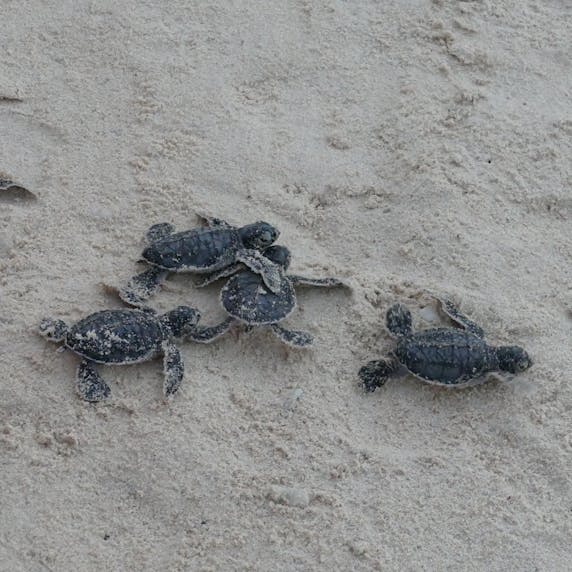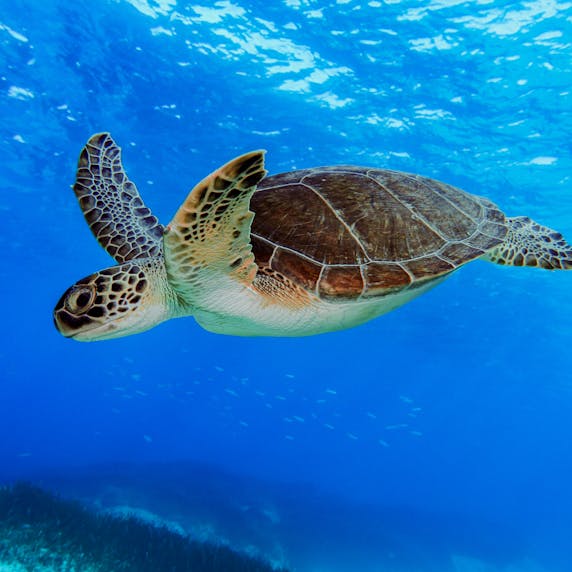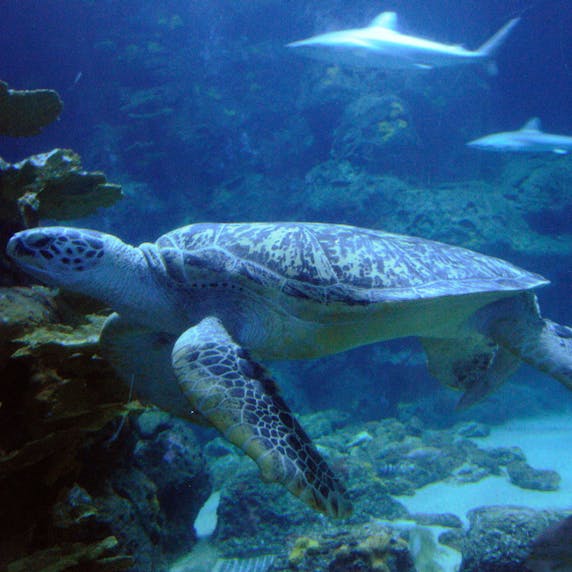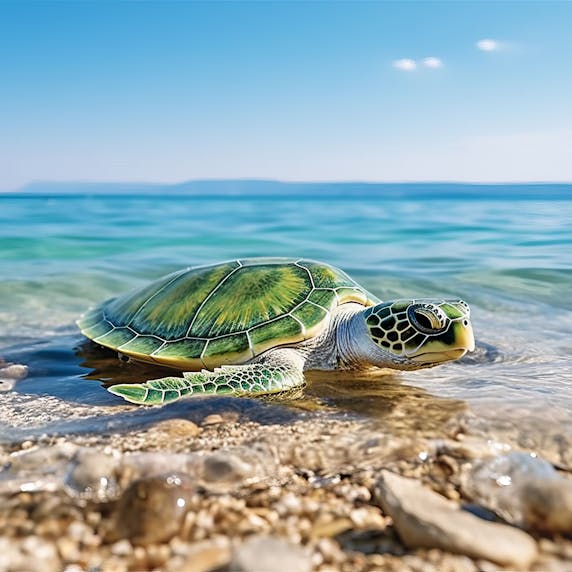
From the moment a green turtle emerges from its egg, it is completely on its own. In large groups, green turtles crawl from their nest on the beach to the sea, hoping that predators will not grab them. Unfortunately, predators are no longer the only threat to sea turtles: hunting by humans, plastic pollution and climate change are also causing a tremendous turtle decline. Therefore, it is important that the green turtle is not left alone after all.
Chelonia mydas

80 years
50 centimeters
1.5 meters
68 – 190 kilograms
Green turtles are fully adapted to life underwater. The shell has a flattened, streamlined shape that allows the turtle to move smoothly through the water. It swims with four paddle-shaped flippers. A green turtle can stay underwater for up to an hour. Afterwards, it must return to the surface of the water to breathe. Males are slightly larger than females and have a longer tail.
Green turtles occur in all oceans with tropical or temperate climates. They are also found in the Mediterranean Sea. Adult females travel long distances to return to their beaches where they once hatched every two to four years. There, they dig their nests. Green turtles can dive up to about 450 meters deep, but usually swim closer to the surface so they can breathe regularly.

Young green turtles feed mostly on jellyfish. But as they grow up, they become vegetarians and feed mainly on seagrass and seaweed. In doing so, they play an important role in their habitat. By eating the old tops of the seagrass, they stimulate the grass to grow again. This is how they keep the seagrass healthy. This is important because the seagrass also serves as a nursery for many small fish and crustaceans.

In the 18th century, England started importing green turtles from the Caribbean. They used the turtles' fat to make soup. Long had the soup been known as a delicacy. Only in the 1970s did it become clear that hunting for turtle soup had greatly reduced the number of green turtles. Since then, the hunt for green turtles has been forbidden. Unfortunately, they still often get caught in fishing nets as bycatch by fishermen. This causes them to quickly lose their breath and drown due to stress.

Another major threat to sea turtles is the large amount of plastic waste that ends up in the sea. For example, they get tangled up in old fishing nets and plastic bags that stick to their flippers. Young green turtles also do not see the difference between plastic bags and jellyfish. This puts them at great risk of choking while feeding. By using less disposable plastic and by recycling plastic, we can help reduce the influx of plastic that flows into the sea from rivers.
The green turtle at Diergaarde Blijdorp shares its basin with another turtle species, the hawksbill turtle. It is also home to a large number of fish species, including four species of sharks. To prevent the turtle from being disturbed by the sharks while feeding, all the animals are fed at the same time in different places. To rest, the turtle crawls between the rocks in the basin, where it can lie still for up to half an hour.



